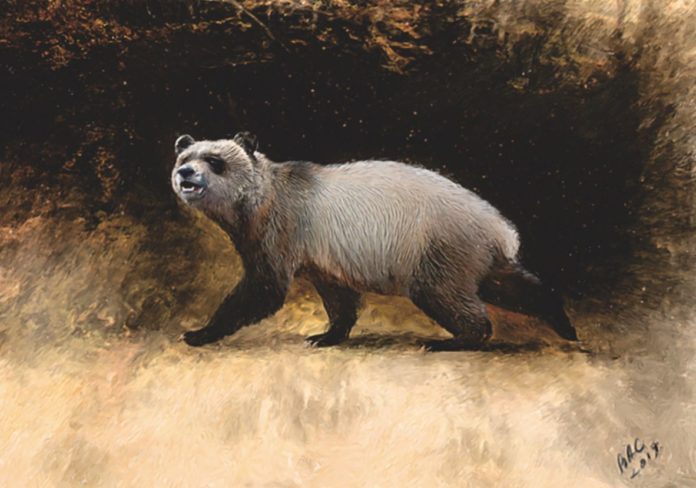Scientists have discovered a new species of panda, which they claim is the last known and “most evolved” European giant panda. It is believed to have lumbered across the wooded wetlands of Bulgaria some six million years ago.
Two fossilized teeth discovered in the depths of the Bulgarian National Museum of Natural History in the late 1970s in the country of eastern Europe offer fresh proof of a massive relative of the present giant panda. But unlike the famous black and white bear of today, it did not only eat bamboo.
Professor Nikolai Spassov of the Museum says, “Although not a direct ancestor of the modern genus of the giant panda, it is its close relative.”
These results were just published in the peer-reviewed Journal of Vertebrate Paleontology.
This discovery illustrates how little we know about ancient nature and reveals that even modern paleontological discoveries can yield unexpected outcomes.
When the upper carnassial tooth and an upper canine were discovered in northwestern Bulgaria, paleontologist Ivan Nikolov cataloged them and added them to the museum’s treasury of preserved treasures. In his honor, this new species is given the name Agriarctos nikolovi.
“They had only one label written vaguely by hand,” recalls the author. “It took me many years to figure out what the locality was and what its age was. Then it also took me a long time to realize that this was an unknown fossil giant panda.”
The coal deposits where the teeth were discovered, which have given them a dark colour, indicate that this ancient panda lived in wooded, swampy areas.
It probably had a mostly vegetarian diet there throughout the Miocene era, however it wasn’t entirely dependent on bamboo!
Fossils of the staple grass that nourishes the modern panda are uncommon in the European – and particularly the Bulgarian late Miocene – fossil record, and the cusps of the teeth do not appear powerful enough to shatter the woody stems.
It most likely consumed softer plant components, which would be consistent with the evolutionary trend of this group toward more reliance on plants.
The giant panda lineage most likely adopted vegetarianism due to coexistence with other huge predators in their environment.
“The likely competition with other species, especially carnivores and presumably other bears,” according to the author, “explains the closer food specialization of giant pandas to vegetable food in humid forest conditions.”
The paper hypothesizes that A. nikolovi’s teeth still offered sufficient protection against predators. Additionally, the size of the canines is identical to that of a modern panda, indicating that they belonged to an animal that was the same size or only slightly smaller.
The authors suggest that the disappearance of A. nikolovi may have been caused by climate change, most likely as a result of the “Messinian salinity crisis”—a period of time when the Mediterranean basin dried up and profound changes were made to the terrestrial habitats nearby.
“Giant pandas are a very specialized group of bears,” adds the study author.
“Even if A. niklovi was not as specialized in habitats and food as the modern giant panda, fossil pandas were specialized enough and their evolution was related to humid, wooded habitats.
“It is likely that climate change at the end of the Miocene in southern Europe, leading to aridification, had an adverse effect on the existence of the last European panda.”
Co-author Qigao Jiangzuo of Peking University in China was chiefly responsible for narrowing this odd beast’s identify to belonging to the Ailuropodini – a tribe within the Ursidae bear family.
Although the giant panda, the only member of this species still alive, is well recognized for it, they originally roamed throughout Asia and Europe. It’s intriguing that the authors suggest two different distributional routes for this group.
One potential evolutionary path for the Ailuropodini would have them leaving Asia and ending with A. nikolovi in Europe.
Professor Spassov, on the other hand, cautions against this notion, claiming that “the oldest members of this group of bears were found in Europe.”
Considering that the ancestors of another genus, Ailurarctos, evolved in Asia, it is possible that the group originated in Europe before migrating there. The contemporary giant panda, Ailuropoda, may have originated from these early pandas.
Image Credit: © Velizar Simeonovski, Chicago
You were reading: “Most Evolved”: Rare New Species Of Giant Panda Found In Bulgaria – No One Knew They Existed
